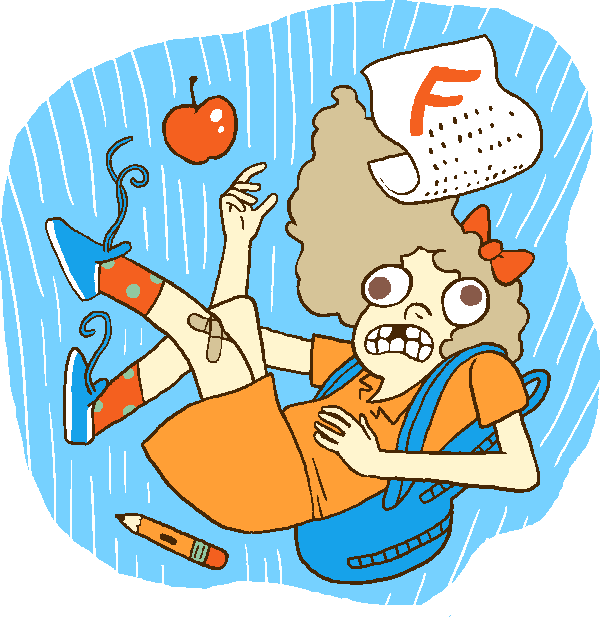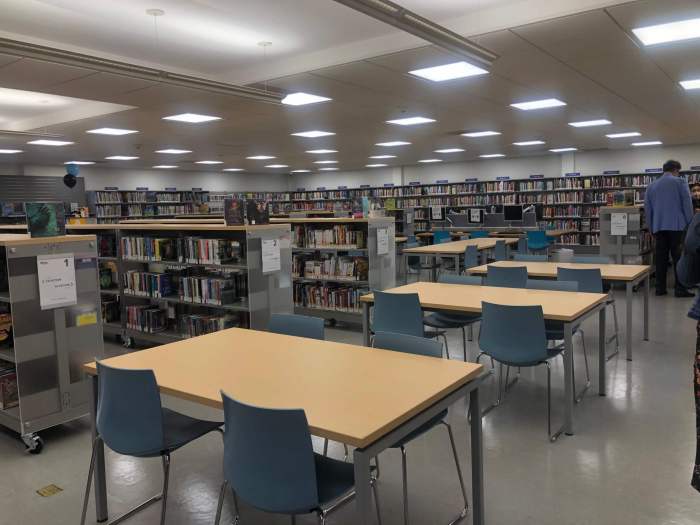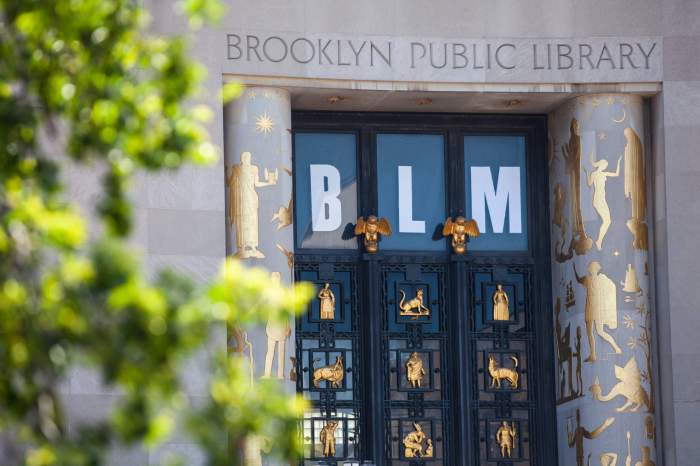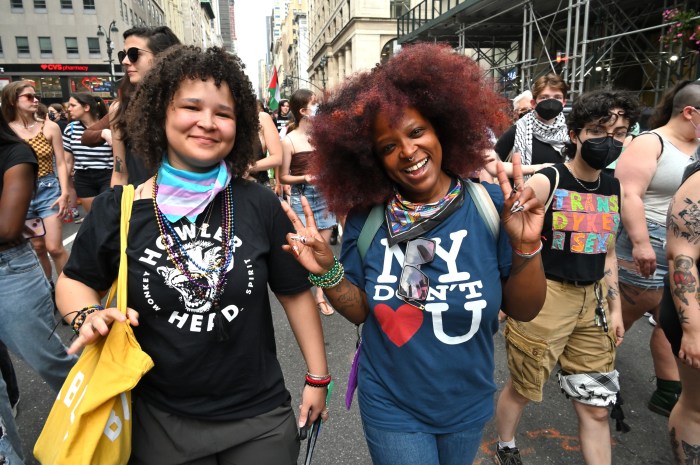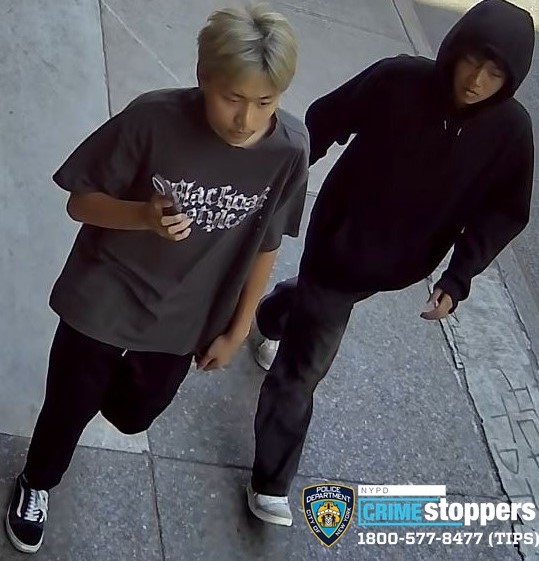A gleaming trophy from the Brooklyn Public Library’s Robotics League Championship now sits in Bushwick’s Washington Irving Branch, thanks to the work of a small but mighty team and their little Lego robot.
Young engineers Adrian Rojas and Wiley Burnam — with the help of Washington Irving librarian Samantha Edwards and team coach Chris Cotton, a BPL technology resource specialist — built and programmed the robot that won out over 14 other teams from other branches, some with many more members.
“They were so happy to finally see that all that hard work they put in created something that worked exactly how they both designed it, how they both coded it,” Cotton said. “They were just so, so excited to see how all their hard work has paid off.”
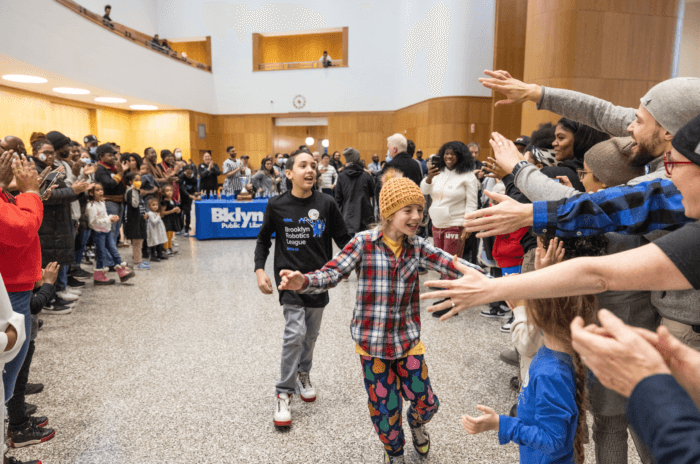
Under Cotton’s direction, Rojas and Burnam — sometimes with help from their younger siblings — spent ten weeks building and programming the robot in preparation for the Jan. 21 competition. Most of the time, the group met twice a week — but right before the championship, they met four times in a row to iron out all the remaining tweaks.
Each colorful Lego robot is based on a Lego “Brick” — the “brain” of the machine, Cotton said, which controls the wheels, motors, and any other attachments the team adds on to help it measure distances or read colors on the table at the championship competition.
In the end, the competing robots are placed on the maps, where they face a series of predetermined ‘missions’: pushing and pulling small items into new locations, picking up and dropping things into set spots, and more. To win, the robot must finish as many tasks as possible within two-and-a-half minutes.
At the beginning, the kids knew how to follow the rules of the road and the basic instructions to get the robot built.
“Understanding the rules of the robot games is probably first and foremost, for them, because the rules are made in a way that they can … I don’t want to say break them, but they’re very loose rules,” Cotton said. “They can interpret the rules to however they want to try to complete the missions.”
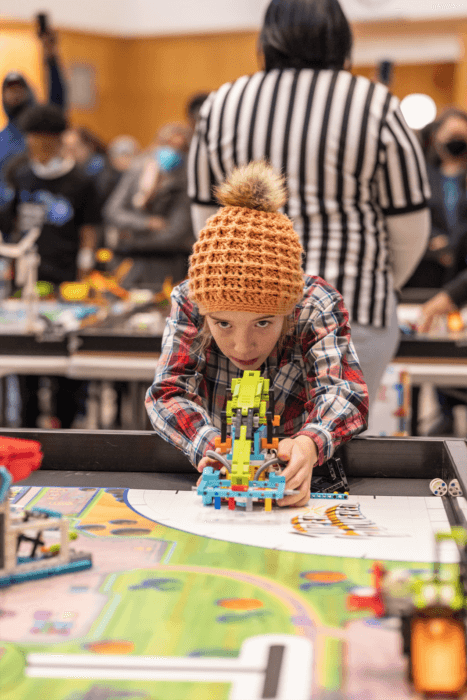
Then, of course, there’s the coding — which was tricky at the start, forcing the duo to slow down and “debug” their robot — and the teamwork, which was surprisingly easy for two kids who hadn’t known each other before they entered the program.
“It broke down more at the very, very end when they had to get creative with a presentation and they had different designs that things that they each wanted to do but couldn’t quite agree over,” Cotton said. “That was probably the only time where I experienced any kind of disagreement between them. Other than that, they got along extremely well.”
The point of the Robotics League — which was created as part of BPL’s annual incubator program – isn’t just to build and code a robot, Edwards added, but to help solve a real-world problem. This year’s challenge was Superpowers, and was all about creating and saving energy, Cotton said. Rojas and Burnam came up with the idea to harvest electricity from lighting.
“We partner with First NYC, who run these kinds of tournaments, and that’s a huge thing of theirs — it’s not just about learning how to build and code a robot, but it’s about learning how to solve problems, how to work as a team, how to think critically,” said BPL spokesperson Fritzi Bodenheimer.
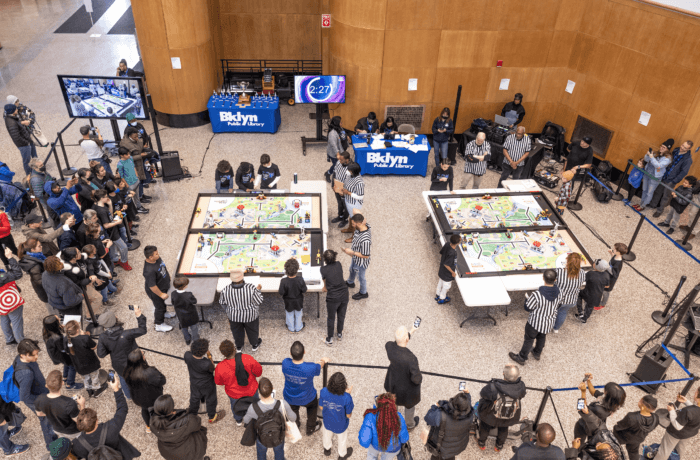
The kids — and Cotton — got some help from Edwards and other librarians who could point them toward the right resources to research their problem and possible solutions.
Having secured the Brooklyn trophy, the Washington Irving team — plus the second and third place winners, the Kings Bay and New Lots libraries — will compete in the citywide competition later this year.
The kids have already said they’re excited to keep building and coding, even outside of competition season, Cotton said. In future years, their younger siblings – who were too little to officially join the team or help out much — might even join in officially.
“They were really happy about the success of the team,” Edwards said. “Overall, the work that they put in, the dedication, it was all-around a good feeling for our branch. We are really happy, and proud of the kids that any issues they may have faced, they got over them, and they figured out how to do this thing, and get this robot to work.”


